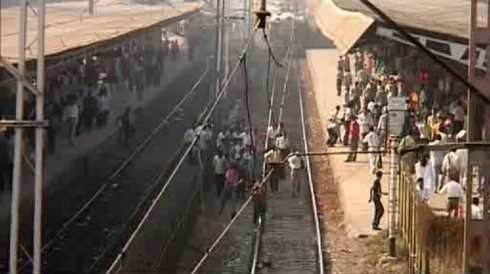Bombay Cinema: An Archive of the City
Initially the concept of the "elsewhere" that inspired my focus on the conflict between the real and the ideal in Mumbai came from an article by Ashraf K. Kazi about the "Masala City." He went on to give examples from Bollywood movies such as Mein Prem Ki Diwani Hoon, where the entire movie unfolds in an imaginary Indian town called Sundarnagar. This lead me to look into Bollywood and the ways it represents Mumbai. The movie-making industry in Mumbai has come of age - now more than a 100 years old, and it reflects the city's conflicts, politics and desires as much as its people. Excerpts from the book Bombay Cinema by Ranjani Mazumdar:
"The Bombay-based film industry resonates throughout the world, in places where the Indian diaspora has settled and in places where nonnative speakers appreciate its unique choreography of music, melodrama, fantasy, and spectacle. Much of popular cinema’s success can be attributed to what many in the industry refer to as a “techno folk” form, which combines folk traditions with new cinematic technology."
"Drawing on various visual, literary, and artistic traditions, each with its own distinct history, popular Indian cinema is an evolving, unabashedly hybrid cultural form that narrates the complicated intersection between tradition and modernity in contemporary India. Film production started in India almost simultaneously with other filmmaking countries, beginning in 1896."
The author also mentions the Indian street, as a place which contains Indian life and all its related conflicts. Although I am currently focussing on building a virtual Mumbai skyline, creating a street could also interest me in the future.
"In a rare piece, Arjun Appadurai describes the Indian street as the space where “India eats, works, sleeps, moves, celebrates and worships. The street is a stage that rarely sleeps” (1987, 14). Through a vivid visual anthropology (across different cities of India), Appadurai traces both the historical formation and the function of the street, as well as its present location in the cultural and social life of India. The multiple activities and events of the street are a clear reminder that the “sharp demarcation of public from private spheres is a recent addition to the Indian consciousness” (1987, 14). For Dipesh Chakrabarty, the modernist categories of the public-private divide were challenged by the street in India where “People washed, changed, slept...out in the open” (16). But neither Appadurai nor Chakrabarty refers specifically to the presence of women in the street. The Indian street as described by these writers is ubiquitous and peopled by all types engaged in different forms of activity in an almost genderless space."
Reference:
Ashraf, K Kazi. (2005) Masala City: Urban Stories from South Asia. The New Mix: Culturally dynamic architecture, Sara Caples and Everardo Jefferson, Architectural Design. Vol 75, No 5 Sept/Oct 2005, pp.67-68.
Mazumdar, Ranjani. Bombay Cinema : An Archive of the City. Minneapolis, MN, USA: University of Minnesota Press, 2007. p 18, 19, 120. http://site.ebrary.com/lib/aib/Doc?id=10206194&ppg=18 Copyright © 2007. University of Minnesota Press. All rights reserved.
